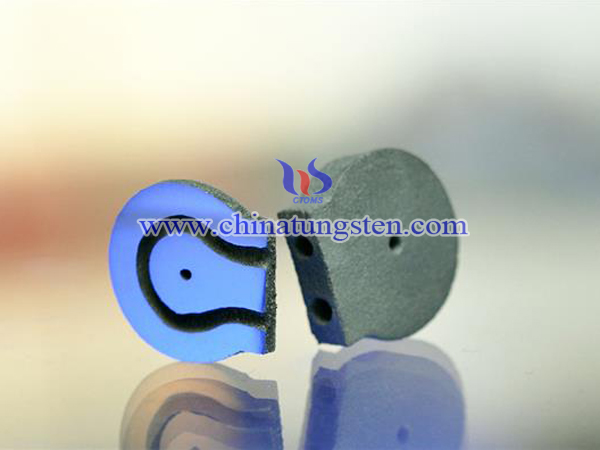3D Printed Cemented Carbide Tools with Adjustable Mechanical Properties
- Details
- Category: Tungsten's News
- Published on Tuesday, 07 February 2017 14:32
Cemented carbide, which consists of fine particles of carbide cemented into a composite by a binder metal, is an extremely hard material frequently used in mechanical and automotive engineering and the building materials industry. Excitingly for those industries, researchers have now managed to produce 3D printed cemented carbide tools using a binder jetting 3D printing technique. According to the researchers, these 3D printed tools are of comparable quality to those produced using conventional methods, and can be made into more complex shapes.
As an expert in the field of hard metals, researcher has for decades developed ceramic carbides by means of uniaxial or cold isostatic dry pressing, extrusion and injection molding, and shape cutting. These methods were employed to produce reliable cutting, drilling, pressing, and stamping tools made of tungsten carbide. Despite the reliability of those tools, however, Fraunhofer IKTS still faced a problem when it needed to create complex geometries, such as helical or meandering cooling ducts inside a component. These features could only be implemented at a high cost, and were often discarded altogether.
By developing a 3D printed method for cemented carbide tools, which is now able to create such designs with ease. It is known that through resource-saving and tool-free 3D printing, even complex, individualized ceramic geometries can be realized quickly.
The particular 3D printing method used by the researchers are form of binder jetting. During this process, powders or granules of a ceramic hard material, such as cemented carbide tools, are deposited layer by layer and wetted by the print head using a binding material made of cobalt and nickel or iron. This binding material acts as an adhesive between the layers of powder. The researchers aimed to get produce entirely dense components with good mechanical properties, and were even able to selectively adjust the flexural strength, toughness, and hardness of the 3D printed parts by varying the proportion of binder in the carbide: the lower the proportion of binder, the harder the component.
The prototypes manufactured have a binder content of twelve and seventeen percent by weight, and show a structure comparable to conventionally manufactured tools. Through the use of 3D printed for the production of complex green bodies and subsequent sintering under conventional sintering conditions, they achieve components with a typical carbide structure at one hundred percent density. Moreover, it is possible to set a homogeneous cobalt distribution achieving a comparable quality to conventionally produced high-performance tools. 3D printed cemented carbide tools will present at the World Congress & Exhibition.

| Tungsten Carbide Supplier: Chinatungsten Online tungsten-carbide.com.cn | Tel.: 86 592 5129696; Fax: 86 592 5129797;Email:sales@chinatungsten.com |
| Tungsten News&Tungsten Prices, 3G Version: http://3g.chinatungsten.com | Molybdenum News & Molybdenum Price: http://news.molybdenum.com.cn |



 sales@chinatungsten.com
sales@chinatungsten.com